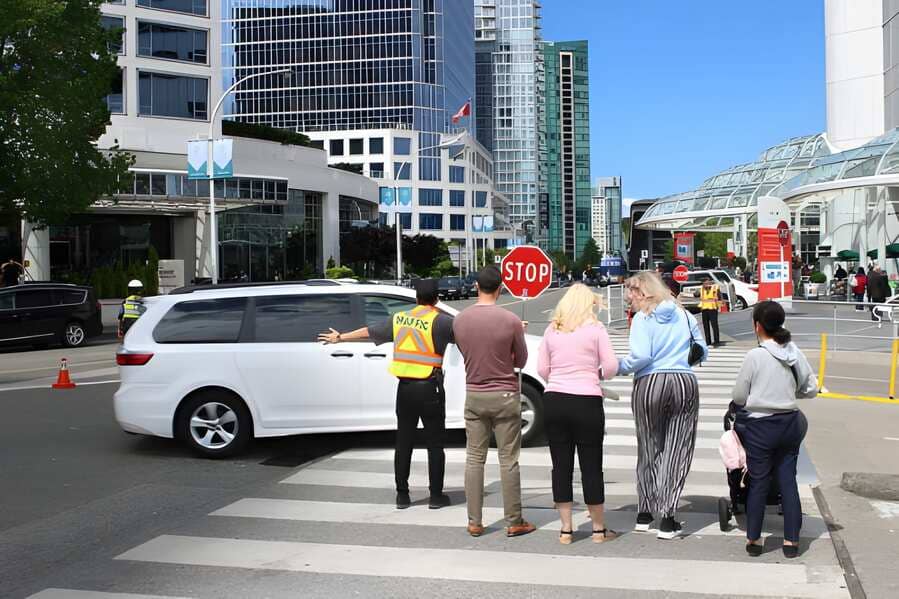Currently Empty: $0.00

What is Vancouver Doing to Make Streets Safer for Pedestrians and Cyclists?
Community & Safety Awareness – Promoting Safer Roads in Vancouver: Local Community Initiatives
Both the city of Vancouver and the state of Washington are continuously studying traffic accidents in an effort to prevent them. Both have periodic new programs aimed at enhancing traffic safety through infrastructure improvements and awareness and enforcement campaigns.
Traffic Safety Initiatives in Vancouver
Like many municipalities across the country, the city of Vancouver is implementing its own traffic safety plan in an attempt to reduce fatalities and serious accidents. This local program works in tandem with the State of Washington roadway safety program.
The Vancouver Local Road Safety Plan lays out findings from an extensive analysis of car accidents in the city over a five-year span (2016-2020) including data related to severity, location, weather conditions, and roadway factors. The study found that the highest proportion of car accidents in Vancouver occurred on principal arterial roads. The city also cataloged statistics about causes of collisions and contributing factors.
Vancouver identified several “focus areas” of crash factors based on its study of local collisions and the statewide Strategic Highway Safety Plan. These factors include impairment, distraction, speeding, lane departures, intersections, and young drivers. The Local Road Safety Plan is geared toward infrastructure improvement and the plan acknowledges that “roadway design that accommodates human mistakes and injury tolerances is effective in reducing fatalities and severe injuries for all crash types.”
The data and statewide program have led the the city of Vancouver to focus on priority locations for safety countermeasures, including the following:
- Mill Plain Blvd and Hearthwood Blvd: This is an extremely busy intersection with a total of eight traffic lanes. Potential countermeasures include converting the intersection to a roundabout, reducing through lanes, protected left turns, installing lighting, installing cameras, and improving markings.
- SE 164th Avenue: SE 1st Street – SE Tech Center Drive: This is a major arterial road that sees heavy traffic. It is a high-crash location, and there were three fatalities and two severe injuries in this portion of 164th Avenue during the study period. Potential countermeasures include narrowing 164th Street and changing a permissive left turn signal to a protected one.
- SE Chkalov Dr: SE Mill Plain Boulevard to SE 7th Street: This was one of the most dangerous intersections studied in the Vancouver area, as it had the highest number of crashes with serious injuries. The average daily traffic is also among the highest in the Vancouver area.
- Fourth Plain Boulevard: Although this is a narrower road, there are dangers for people who are using the bus, walking and cycling in the area. Potential improvements are aimed at making the roadway safer for pedestrians and bus passengers.
Finally, the Local Road Safety Plan aims to introduce systemic changes through updated policies, programs, and projects which include:
- Adopt a “Vision Zero” policy to eliminate serious and fatal injury collisions by 2040;
- Identify high-crash corridors through collision analysis programs;
- Enable automated enforcement detection;
- Add pedestrian-scale lighting;
- Expand existing programs to make streets feel safer for walking and biking;
- Enhance sidewalk and bike lane access;
- Update street standards and safety policies with latest best practices; and
- Lower speed limits.
This plan and the priority projects have a target completion date of 2026.
Washington State Target Zero Program
While Vancouver’s local program focuses on infrastructure improvements and structural changes in high-volume and dangerous areas, Washington has its own safety initiative that addresses driver behavior. Target Zero focuses both on driver education and increased enforcement of traffic laws.
Target Zero begins with a similar data-driven approach that Vancouver took in determining high-risk areas and behaviors. The program then contemplates increased DUI checkpoints and speed enforcement throughout the state, as these are among the most prevalent causes of car accidents. Target Zero also aims to educate drivers on safe behaviors, such as the use of seat belts and not speeding or operating a car while distracted.
The City of Vancouver has a goal to implement its own local Target Zero program by 2040.
Risk Awareness
The statistics and data revealed by the Local Road Safety Plan show the reality that collisions are prevalent throughout the city. If you have been injured in a crash, you may be entitled to compensation for your injuries and damages. The Washington personal injury lawyers at Schauermann Thayer can speak to you about the legal process and your options. You can schedule by calling us today at 360-695-4244 or by filling out an online contact form.

